It’s a typical rainy day in Pennsylvania, but that hasn’t deterred any of the students in the Experiencing Architecture: Fallingwater Summer Design Studio. In fact, the rain has let up enough that one of the students, Claudia Engfer, has suggested walking to Frank Lloyd Wright’s architectural masterpiece, Fallingwater, from their current residence.
The group consists of six students, all at various stages in their schooling, and two professors. Today, they have been invited to experience a private tour of Fallingwater, and so they begin their trek through the beautiful landscape of Mill Run, Pennsylvania.
The natural landscape is green and rolling, with purple irises dotting the dirt path. The grey clouds hold off in the distance. Drew Armstrong, an associate professor and director of the Architectural Studies Program at the Dietrich School, talks about how it’s not just the structure that Wright built that is so amazing architecturally, the landscape itself is another piece of the design.
Armstrong and Gabe Nolle have spearheaded a new summer design studio program, Fallingwater Studio. The studio is a six-week-long course that begins with a stay at High Meadow, a Fallingwater Institute educational program complex, complete with both lodging and studios for the students to work in during their stay.
As the class ventures further down the path, the sounds of roaring water become louder. What seems like another hike in Laurel Highlands quickly changes as the property opens in front of the class, revealing lush forest, roaring falls, and nestled in between the two, Fallingwater. The student's chatter slows to a stop to take in the beauty of the house.
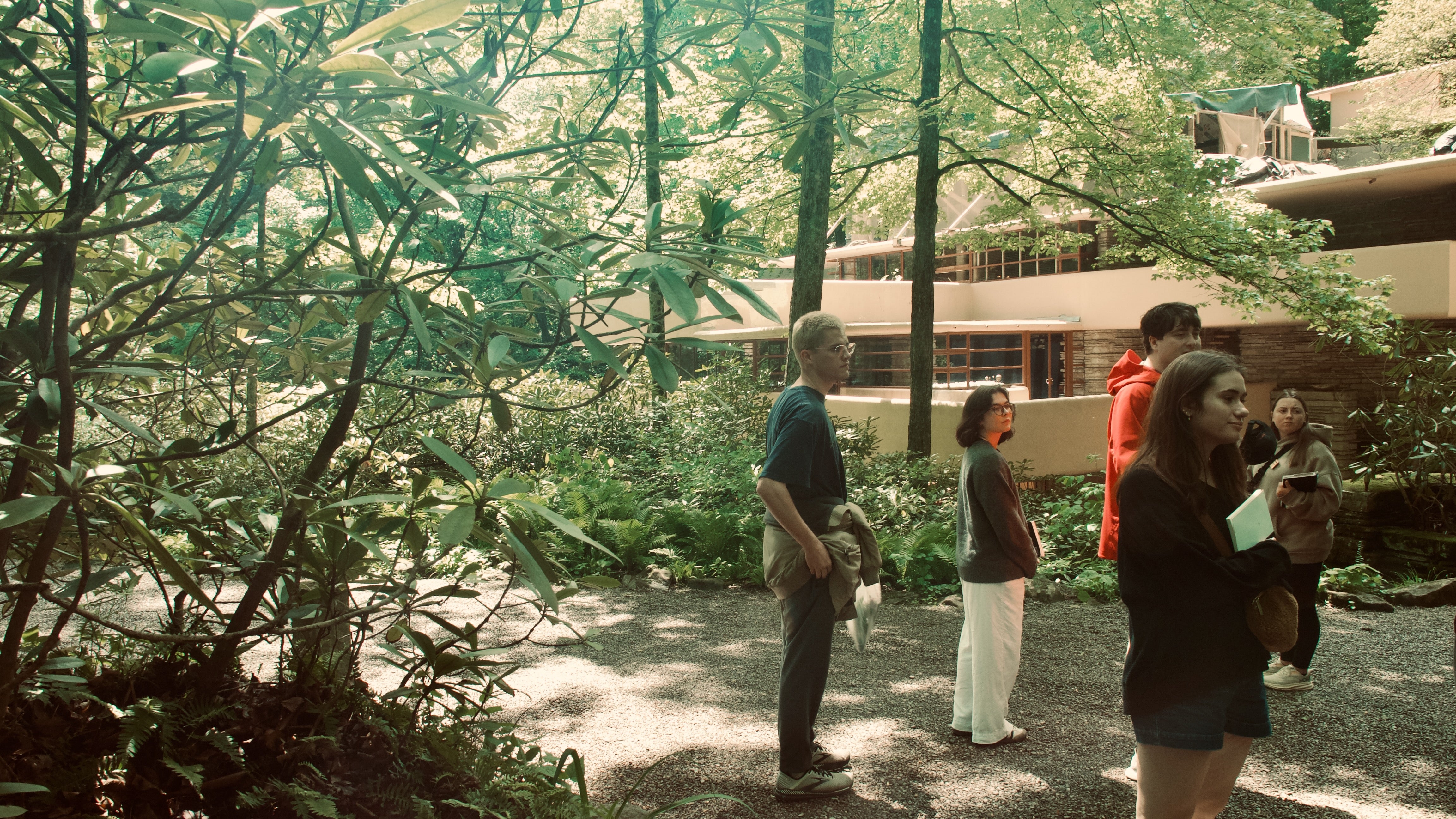
Summer Design Studio Students standing in front of Fallingwater
Marie, Fallingwater Institute’s program manager, explains some of the history of the house built for the Kaufmanns and defers to Nolle, who has a 20-year relationship with the property. As she leads the students to the front door, she encourages everyone to remove their shoes and socks and immerse themselves in the house – an opportunity afforded only to Fallingwater Institute residency participants.
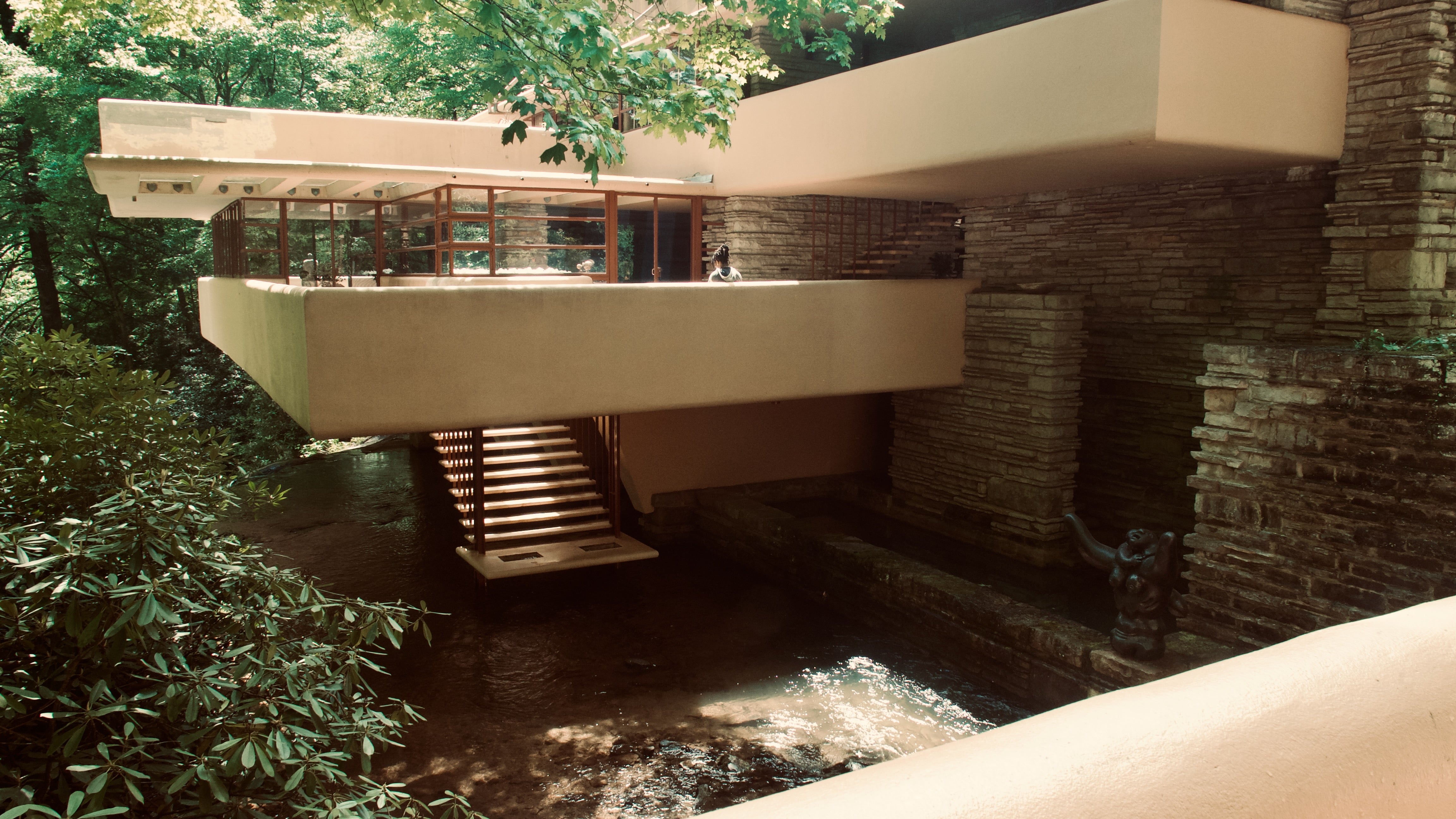
Exterior of Fallingwater
Once inside, Nolle takes over teaching duties, pointing out certain design principles that Wright implemented in the house as well as occasionally quizzing the students on certain items. Nolle is a graduate of Pitt who later attended The School of Architecture (TSOA) founded by Wright. He also interned at Fallingwater and has been heavily influenced by Wright in his own work. A few of the students have also been influenced by Wright, like Hannah Whisman, a senior at Pitt studying Architecture, who visited the site when she was younger.
“I was at Fallingwater when I was little, and that’s what inspired me to pursue architecture, so I felt this was a great chance to work on my design, learn more, and get to experience this amazing building, and just become immersed in architecture.” Whisman remarks.
Nolle says the point of this summer studio is to learn about organic architecture, a style created by Wright.
“What does that [organic] mean in today’s culture, because Frank Lloyd Wright designed organic architecture, but we don’t honor or recognize that definition that he had. The design style “organic” has taken on a different meaning, with being ‘fresh and healthy […]’. We are questioning and putting it back on the students to think about ‘is it time for a new name or definition to continue these principles that Wright created?’”
Each student wanders through the house at their own pace, exploring every room and carefully curated décor. They comment on how it’s not just the structure, the bones, of the house that Wright created, but also the extensive collection of Wright-designed furniture that fills the house. They note how he blended the house into the environment around it, how the glass flawlessly connects to the boulders that Wright used as makeshift walls in certain areas of the house.
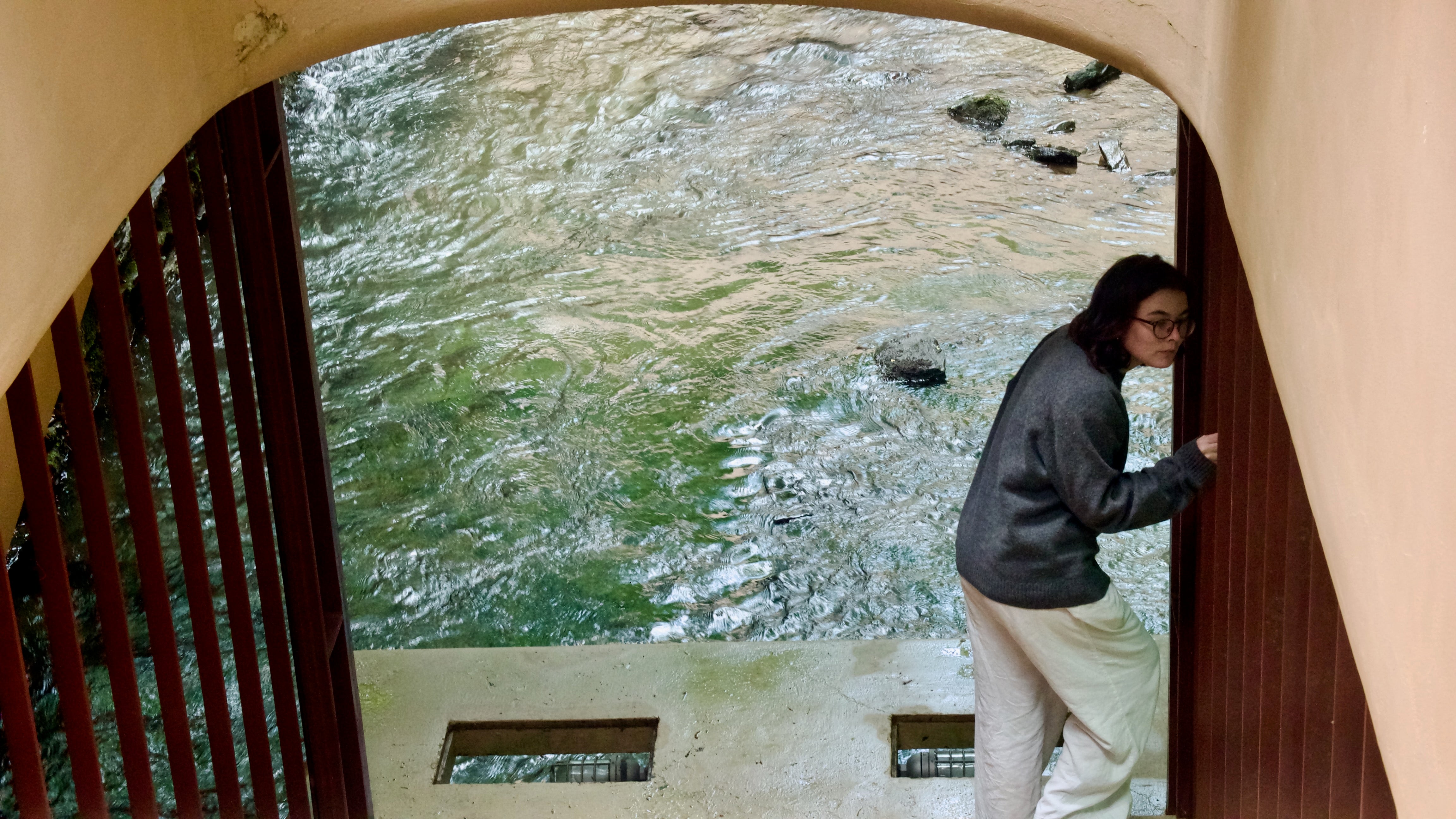
Claudia Engfer at the base of the hatch (note this is normally not available to visitors)
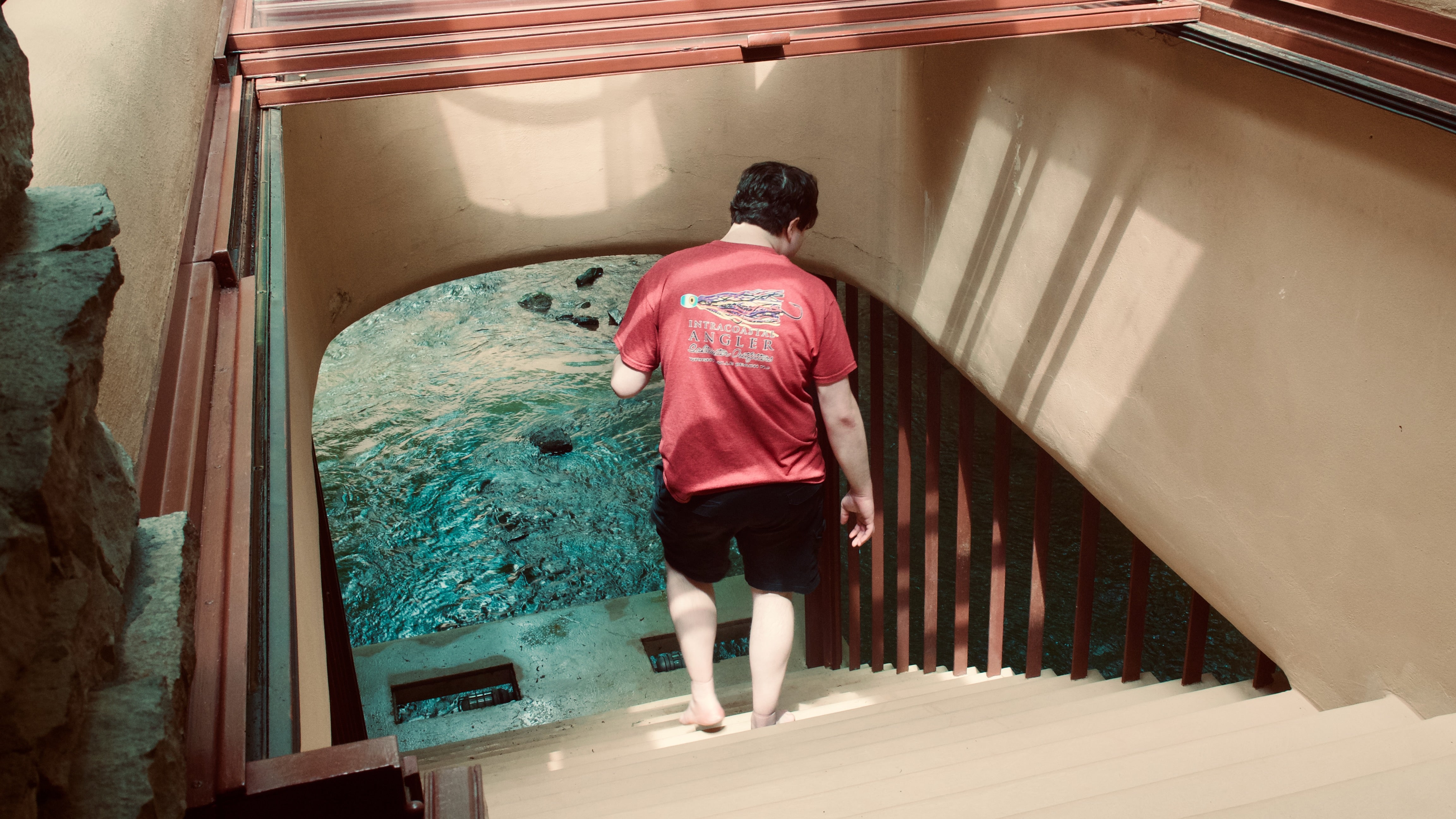
Benjamin Rieker walking down the hatch stairs (note this is normally not available to visitors)
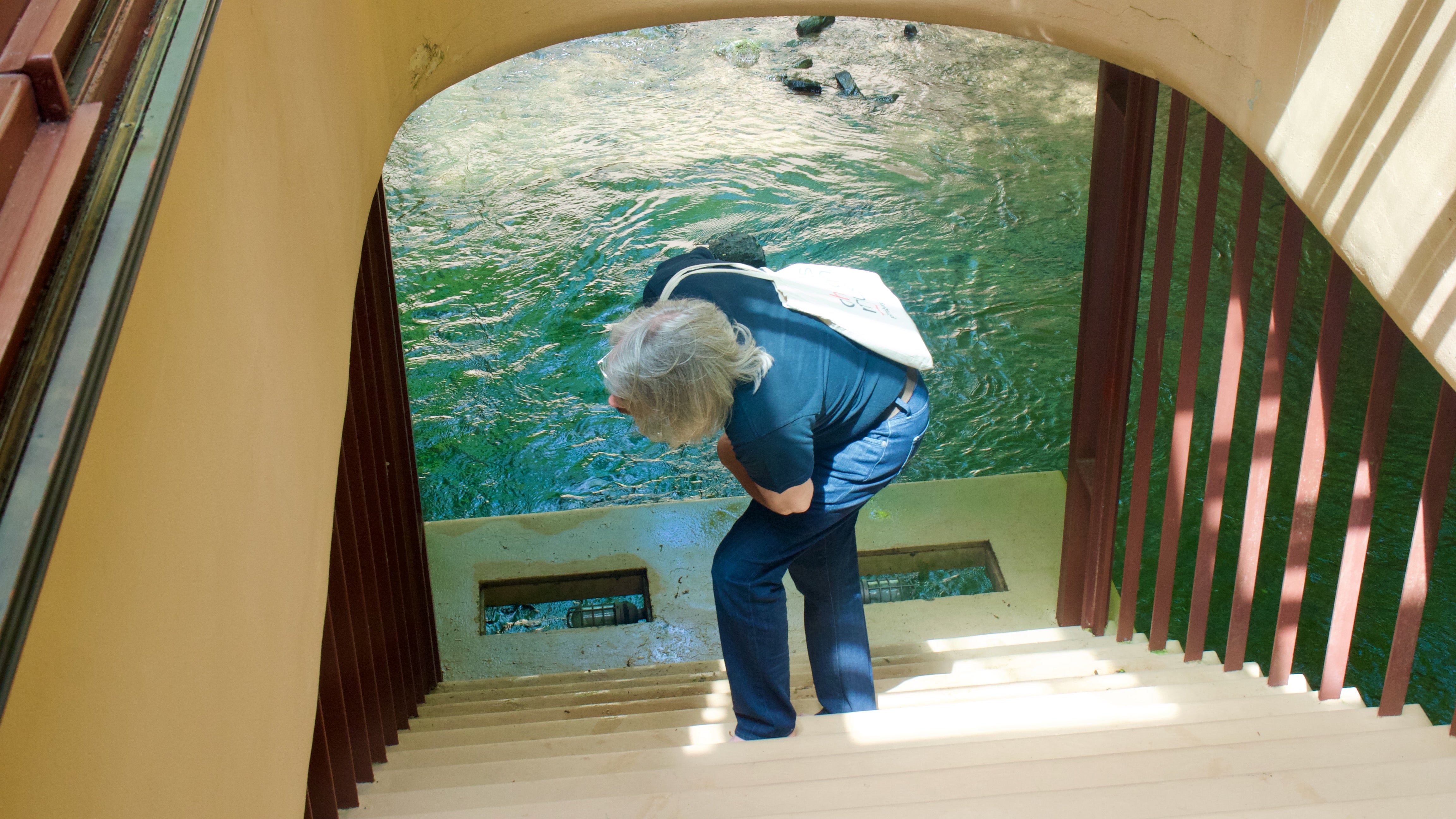
Professor Drew Armstrong checking out the architecture along the side of the stairs of the hatch (note this is normally not available to visitors)
“I think it’s knowing that there’s really no limit to what you can design in architecture. Wright managed to build a house on top of a waterfall, and just having these seamless blends between the architecture and the actual site itself is very fascinating.” Asha Lacet, a senior in the Architectural Studies Program, says.
Armstrong and Nolle are trying to push their students to see architecture as something limitless and in harmony with its location.
“Architecture is a strange thing. It’s always going through different phases, and one of the big questions about architecture currently is this idea of globalization in design and a feeling of placelessness, and Fallingwater is literally about place. This building could not exist anywhere else. So, the idea of this studio is to build around the idea of making meaningful architecture that is specific to a particular region or tradition of craftsmanship.”
Nolle says this is the foundation of what the studio will be looking at for the remaining five weeks.
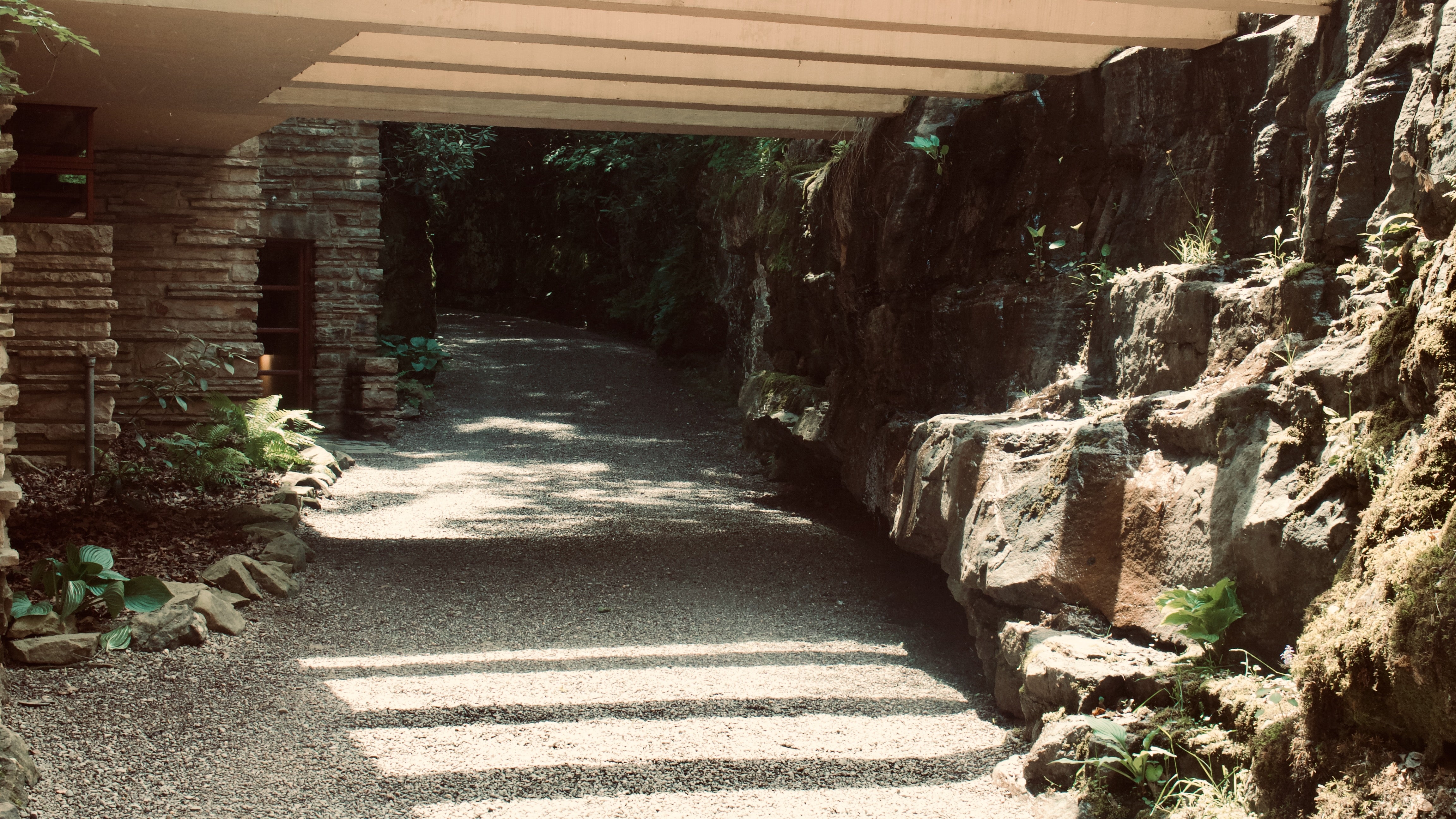
Driveway leading to the front door of Fallingwater
The course was made possible by a donor who, although, chose to stay anonymous, believes in the power of what Pitt offers to their students.
“We believe getting more young students involved during their early stage of forming their career goals is important, so they can see what this could mean to their future. We see how impactful this program is.”
One of the donors spoke about how the Architecture Studies Program has affected their career.
“Although I have currently not pursued architecture, the foundational skills I gained have continued to shape my professional journey. Whether it's approaching strategic challenges with a designer’s mindset, managing cross-functional teams with the precision of a studio project, or translating abstract ideas into tangible outcomes, my architectural education has been a powerful asset. It taught me how to navigate ambiguity, remain adaptable, and see both the big picture and the finer details.”
Because of this generous donation, the residency portion of the studio is free of charge to students, with students only having to pay normal tuition fees for the class itself. The studio is open to students pursuing a minor or major in Architectural Studies who have also completed Foundation Studio and Design Studio1. Armstrong says he intends to continue the studio every summer going forward.
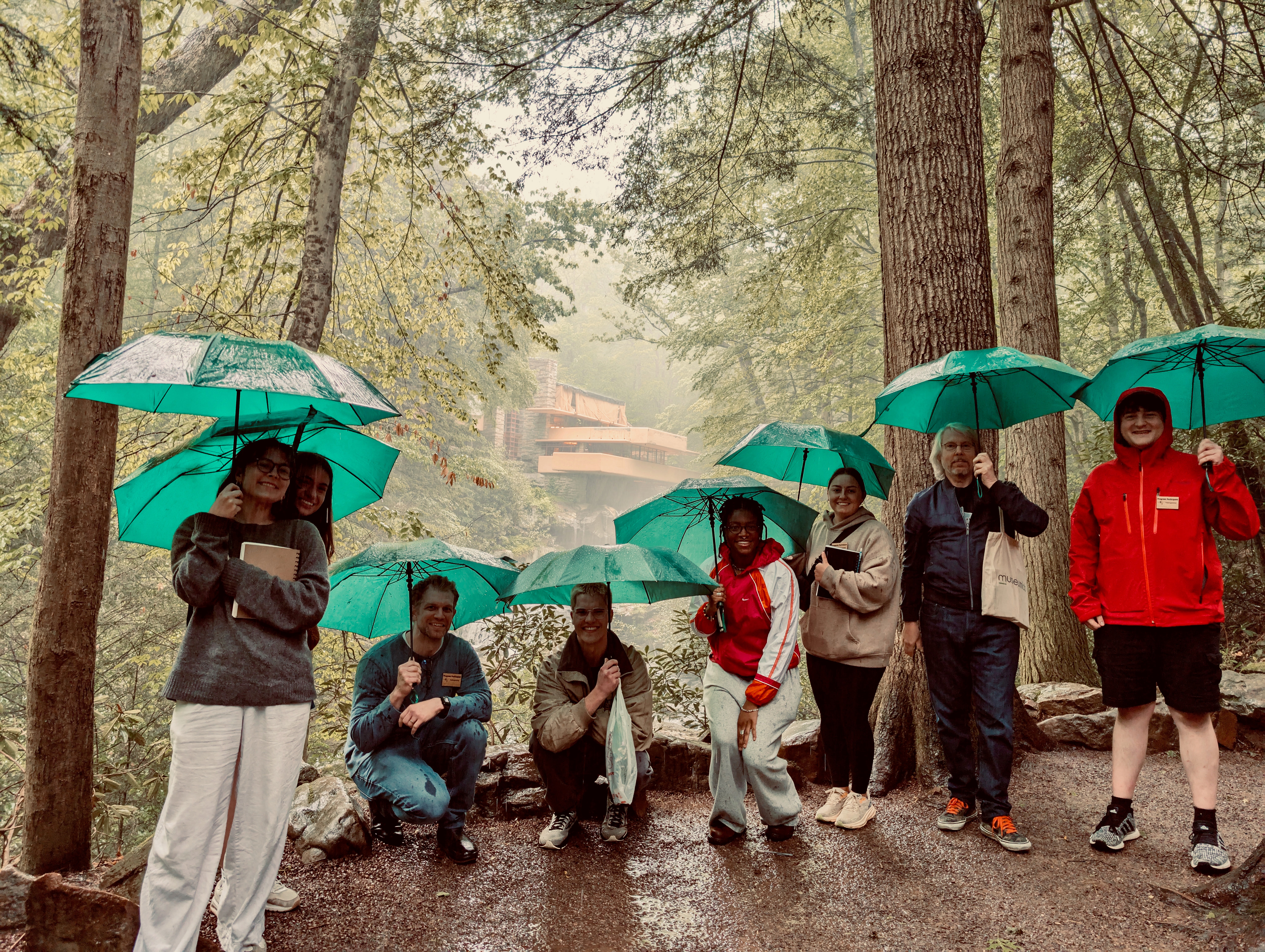
The Summer Design Studio class with Professors Drew Armstrong and Gabe Nolle on the Fallingwater Loop Trail with Fallingwater in the background
Melanie Walls, one of the students currently in the program, had some advice for those thinking about signing up in the future:
“I would say definitely do it because it’s a different experience and not a lot of people can have the chance to do this. So, really just go for it! It’s just fun.”
